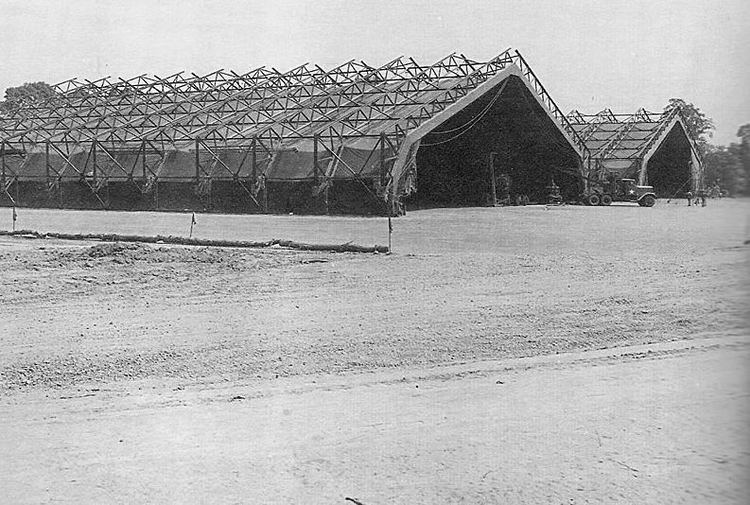Active 1942–1947 Role Logistics support | Country United States Size 62,000 at peak | |
 | ||
Part of United States Air Forces Europe | ||
The European Air Materiel Command was a support organization of the United States Army Air Forces.
Contents
History
In November 1942, Lt. Gen. Frank M. Andrews assumed command of U.S. Army Forces in the Middle East (USAFIME) in Egypt, replacing Maxwell. Andrews was an experienced airman, and one of his first acts was to establish the Ninth Air Force to replace USAMEAF. Brereton assumed command of the new organization and established the IX Air Service Command, which joined the IX Bomber Command and the IX Fighter Command as the major subordinate headquarters.
IX Air Service Command was changed to IX Air Force Service Command (IX AFSC) by an unnumbered Ninth Air Force Memorandum of 29 January 1944.
IX Air Force Service Command was more clearly patterned after its Eighth Air Force opposite number than any of the other Ninth Air Force commands. A number of officers and enlisted men had been brought to England from Egypt, but most of the key members of the headquarters came from the Eighth Air Force. General Miller, for most of the past year the commander of the VIII AFSC, took over the IX AFSC in October 1943 and brought with him members of his former staff. From the Tactical Air Depot Area came additional officers and men to round out a headquarters staff rich in experience. On 5 May, Brig. Gen. Myron R. Wood succeeded General Miller as commander of the IX AFSC. In mid-November, the service command headquarters moved into newly constructed quarters across from the Ascot race course, adjacent to the Ninth Air Force headquarters at Sunninghill Park.
The projected size of the Ninth Air Force and the scope of its operations clearly required a large and mobile service command. The service command, in turn, recognized early that its own size and wide-flung operations made decentralization of its organization desirable. Accordingly, borrowing from the experience of VIII AFSC, in October it set up a base air depot area (BADA) and an advanced air depot area (AADA) which were areas in terms of function rather than geography. The base air depot area was intended primarily for supply and aircraft assembly functions. For a time, BADA was located at Constitution Hill, Sudbury, in Suffolk. In December the IX AFSC divided the advanced air depot area into a 1st and 2d AADA. This further decentralization of the command was purportedly in preparation for the move to the continent, where mobile warfare would require decentralized operations. In addition, the two headquarters could be, and were, of value in organizing and training the many service units formed in the United Kingdom by the IX AFSC.
Beginning in August 1943, RAF Grove was used by the 3rd Tactical Air Depot of IX Air Service Command, repairing A-20 Havocs and P-61 Black Widows. Starting on 31 October, the 31st Transport Group, IX Air Service Command used the airfield with C-47 Skytrains with the mission of transporting cargo and personnel between IX Air Force airfields in the UK. The 31st TG consisted of the 87th, 313th and 314th Transport Squadrons.
In 1945 IX Air Force Service Command was reassigned from Ninth Air Force to USSTAF (about the date IX ASC moved to Erlangen). On 7 October 1946, IX AFSC was redesignated European Air Materiel Command. This command administered United States Air Forces in Europe's supply and maintenance depots. EAMC was headquartered at Erlangen Air Depot. At Erding Air Depot, it had Detachment B, 4th Air Vehicle Repair Squadron, and the 43d Air Depot. The 10th Air Depot was located at Oberpfaffenhofen Air Depot. The 862d Engineer Aviation Battalion and 837th Engineer Aviation Battalion were located at Landsberg. At Industriehafen Air Depot was Detachment A, 42d Air Repair Squadron. Minor EAMC facilities were located at Bad Wiesse, Wolfgang, Munich, Bruck, Oberwiesenfeld and Bremerhaven. EAMC also controlled ammunition depots at Landesberg, Roth and Zepplenheim. EAMC remained assigned to USAFE until it was inactivated on 15 September 1947.
